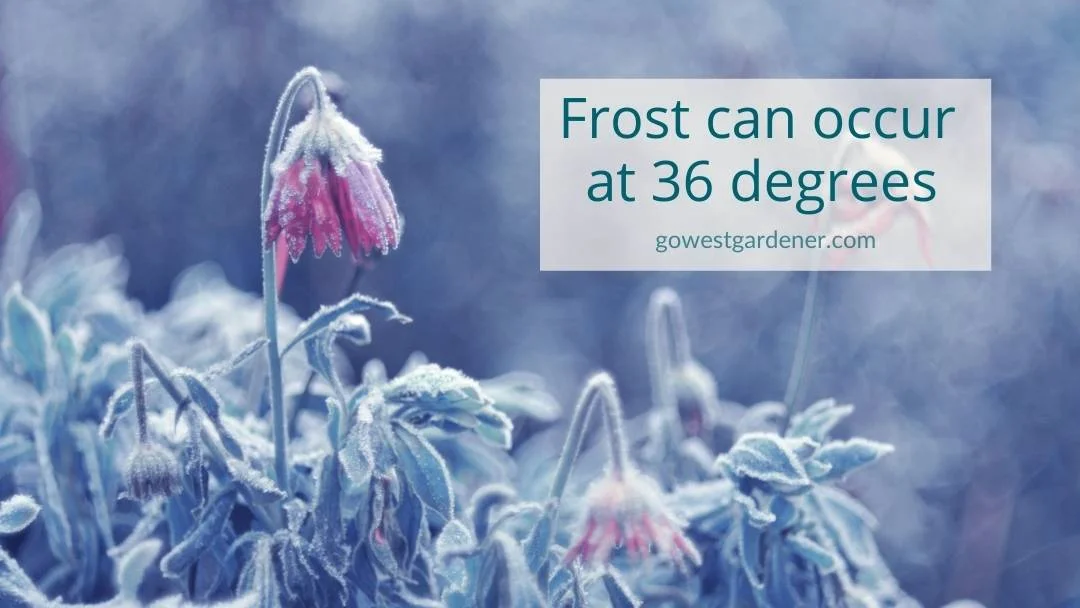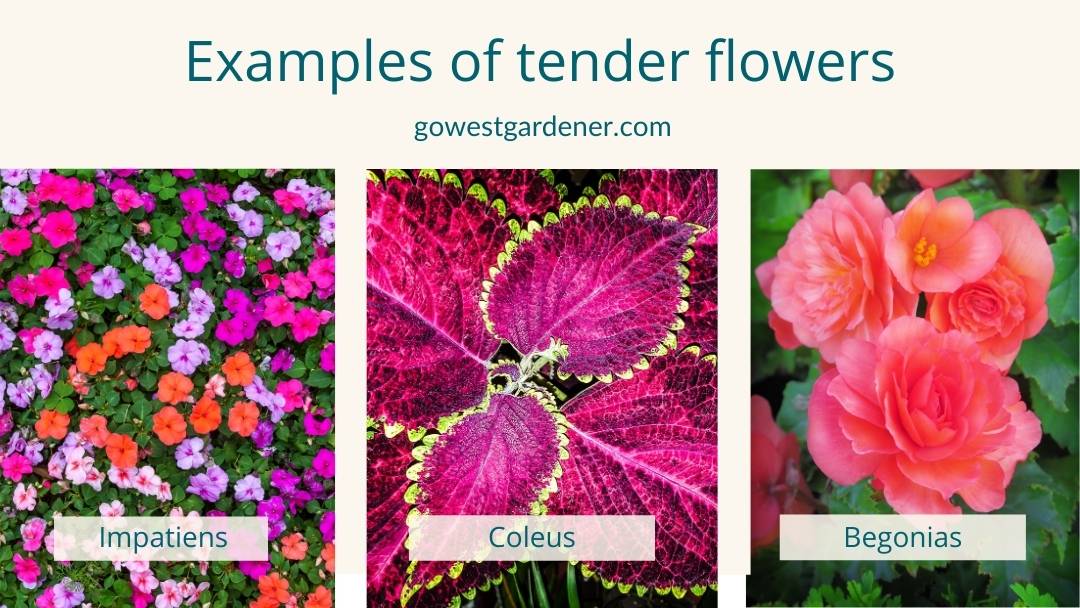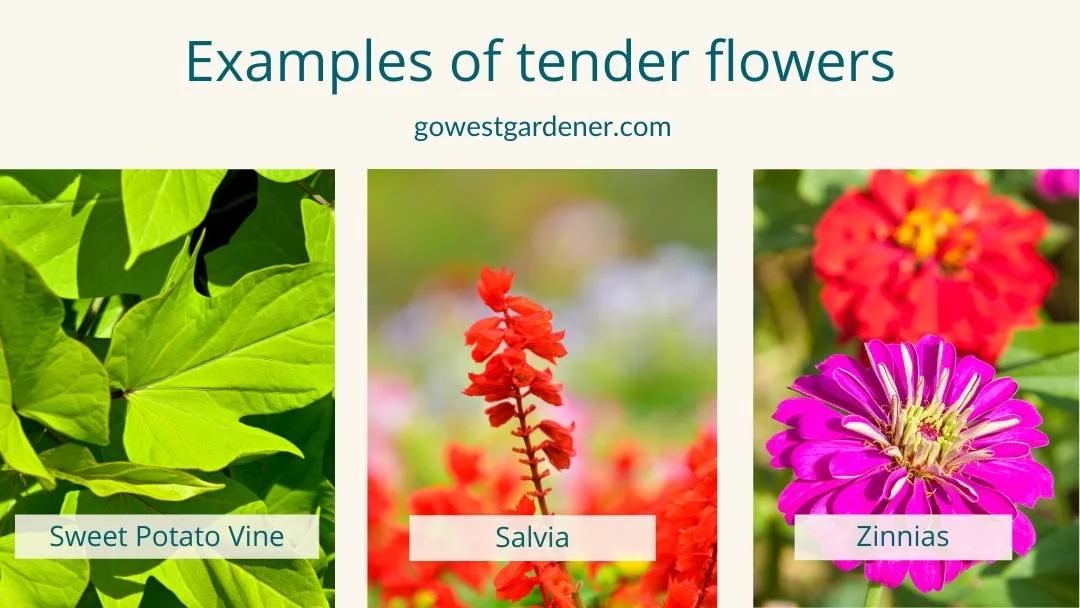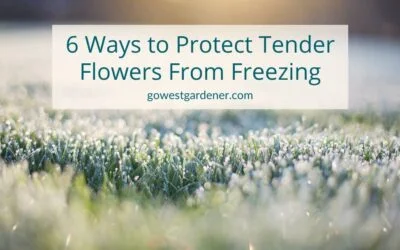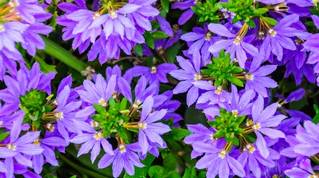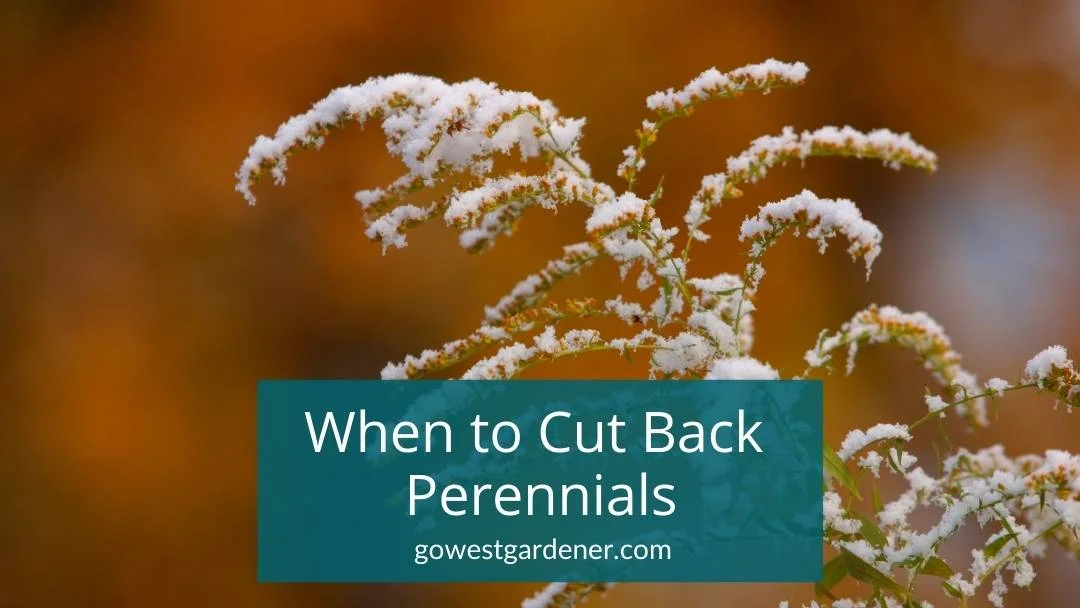When I was first learning how to garden…
I used to think that 32 degrees was the temperature I needed to keep an eye on for my flower plants.
32 degrees is when water freezes, so that must be the point when my flowers will freeze too, right?
But over time, I’ve learned:
There are levels of frost and freezing that affect plants in different ways.
32 degrees isn’t the magic number for all plants.
(Because Mama Nature makes her own rules, y’all!)
So, in this article, I want to share tips I wish I had understood sooner, so you’re a step ahead as a gardener. As our temperatures dip in states like Colorado and Utah, I hope this article helps you understand:
- What’s going on with the annuals and perennials in your garden
- Which flowers you may want to cover and protect (if you want them to last longer)
- Why the heck some of your plants still look good — while others may be a mushy mess!
In gardeners’ terms, annuals are flowers that live for a single year, but don’t return. Perennials are flowers that come back for multiple years.
Here’s a quick summary:
Between 36 and 29 degrees, your most vulnerable flowers are your “tender annuals.”
Tender annuals are your one-season flowers that like warm air and warm soil to grow. They like having “warm feet,” meaning they want their roots to be comfortably warm. These are the guys you definitely want to cover if you want them to last longer. (You can see examples further down this post.)
When you reach 28 degrees or below, more of your flowers will be affected.
Keep in mind, there are always exceptions with Mother Nature. I’ve shared some of them down at the end of this post. Nonetheless, this will give you a good overview.
Let’s start with frost because it often shows up first.
Frost
When temperatures reach 36 degrees (or below) AND the moisture conditions are right
Frost is a thin layer of water vapor that turns into ice on the surface of your plants. When ice forms on the surface of your plants, the water inside your plants can freeze too, causing the cells to rupture and lose all their water.
And this can damage or kill your plants.
If the moisture conditions are right for frost, you can get it when temperatures reach 36 degrees or below.
As I mentioned earlier, between 36 and 29 degrees, frost often has the biggest effect on your tender annuals.
Have you ever had a friend visit from a city like San Diego? When our temperatures are 50 degrees, you’re thinking about wearing shorts… but your friend wants to put on a parka. Your friend from San Diego is like your tender flowers. These plants do not adjust well to the cold.
These flowers are happiest when temperatures are warmer. They’re VERY sensitive to frosts and cold temperatures.
Light freeze
Between 32 and 29 degrees
You know the tender annuals we’ve been talking about? The temperatures in a light freeze will likely kill them. A light freeze takes place between 32 and 29 degrees. If you’re catching your local weather report, you’ll hear your weather forecasters call this a “freeze warning.”
What are examples of tender flowers? You may recognize some of the annuals below.
In my garden, sweet potato vine (pictured above) is ALWAYS the first plant to get nipped.
A light freeze also can damage how your hardier flowers look. Usually, though, it’s just cosmetic damage.
Hard freeze (National Weather Service language)
Between 28 and 25 degrees
A hard freeze should severely damage or kill most of your annual flowers — even your hardier flowers that are happier in chillier temps.
Master gardeners sometimes call this a “moderate freeze.” However, I’ve used the hard freeze language from the National Weather Service here because it’s what you’ll see on a weather app or hear on a forecast. When the weather forecasters say, “There’s a hard freeze warning tonight,” they’re talking about the threshold of 28 degrees or below.
It’s going to be destructive to your annuals if you don’t protect them.
This is the temperature zone where you may start noticing damage to some of your perennials too. For example, you may notice their leaves turning a dark color or becoming a little gooey.
Hard, severe or killing freeze
24 degrees (or colder)
This freeze will likely cause widespread damage to the exposed flowers, leaves and stems on many perennials. (It can depend on how protected your flowers are in your yard, and it also depends on the type of plant.)
This is also the freeze that kills most remaining annuals.
There are exceptions. Pansies and violets, for example, are tenacious little flowers that can survive these freezing temperatures. At lower (warmer) elevations in Colorado, you may see them planted in the fall for spring blooming.
Some exceptions to these guidelines!
Remember, Mama Nature makes her own rules.
Here are exceptions that are relevant if you’re gardening in Colorado, Utah or similar western states:
- If you have young or newly planted flowers, they’re more vulnerable to freezing (and dying) than your plants that have well-established roots.
- If we experience a really big temperature swing, your plants are more vulnerable to damage or death from freezes. In the Front Range of Colorado, we can get 50- to 60-degree temperature swings in the fall and spring. In the fall, this is confusing for our plants (especially our trees). They don’t have time to naturally prepare for hibernation mode, known as “dormancy.” And in the spring, they’ve often started to wake up from dormancy when we get these cold temperature swings.
- If you have flower buds that are opening in the spring, I’ve found they’re more vulnerable to getting dinged by freezes than leaves. The freezes likely won’t kill your plants. You just may not get flowers that year.
- If you’re growing flowers in a protected area of your yard (like along a south-facing fence that’s shielded from the wind), your plants may stay warmer when temperatures drop. I often have flowers that freeze in my front yard, while those same flowers are wide awake and happy in the backyard, which is more protected.
- There are some perennials (plants that come back) that are evergreen. They keep the color in their leaves all winter. You may not notice freeze damage on those plants.
The dates for the first fall frost
We have such varied elevations and conditions in Colorado and Utah, it depends on where you live.
The Front Range of Colorado usually gets its first frost in early- to mid-October. But hey, it’s Colorado. We also can get it in early September. (I’m looking at you, 2020.)
And if you live at a higher elevation, your garden may be at risk for frost year-round.
How to find the spring and fall frost dates in your area
In the fall, if you’d like to find the “average first frost date” for your area, I suggest googling:
- Average first fall frost in {your city}
In the spring, you may want to search for the “average last frost date”:
- Average last spring frost in {your city}
Just a final bit of garden lingo… The “average last frost date” means you’ve reached the point when it’s now less than 50 percent likely you’ll get a frost after this date.



